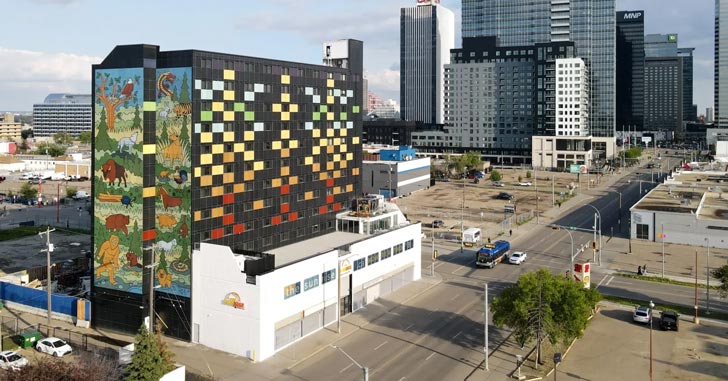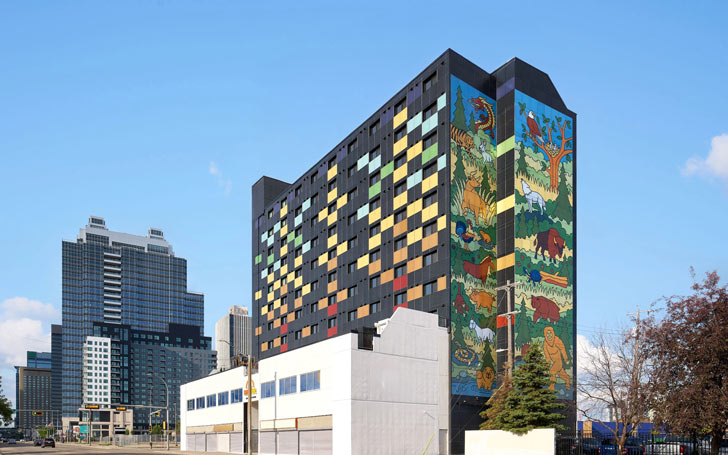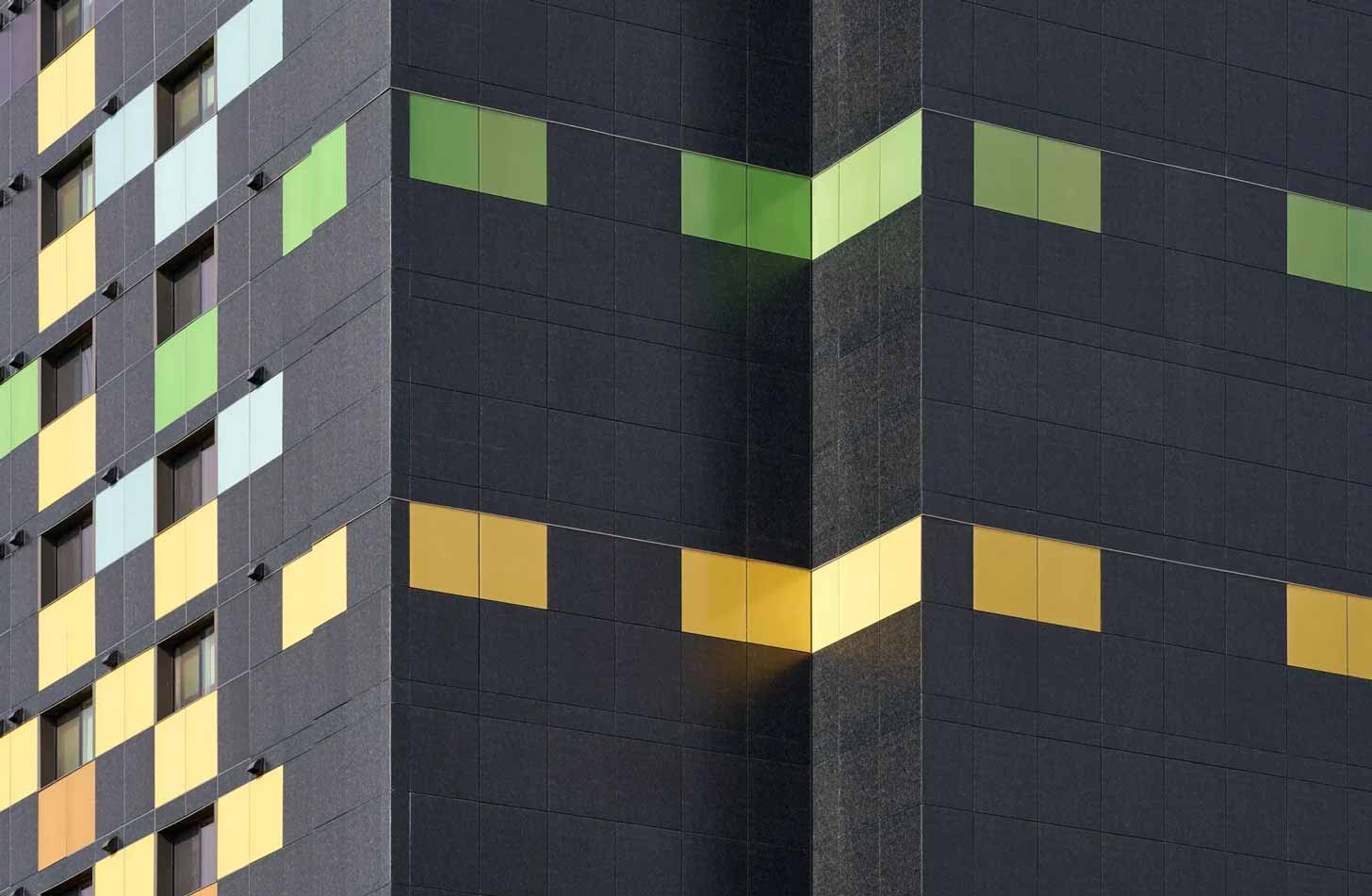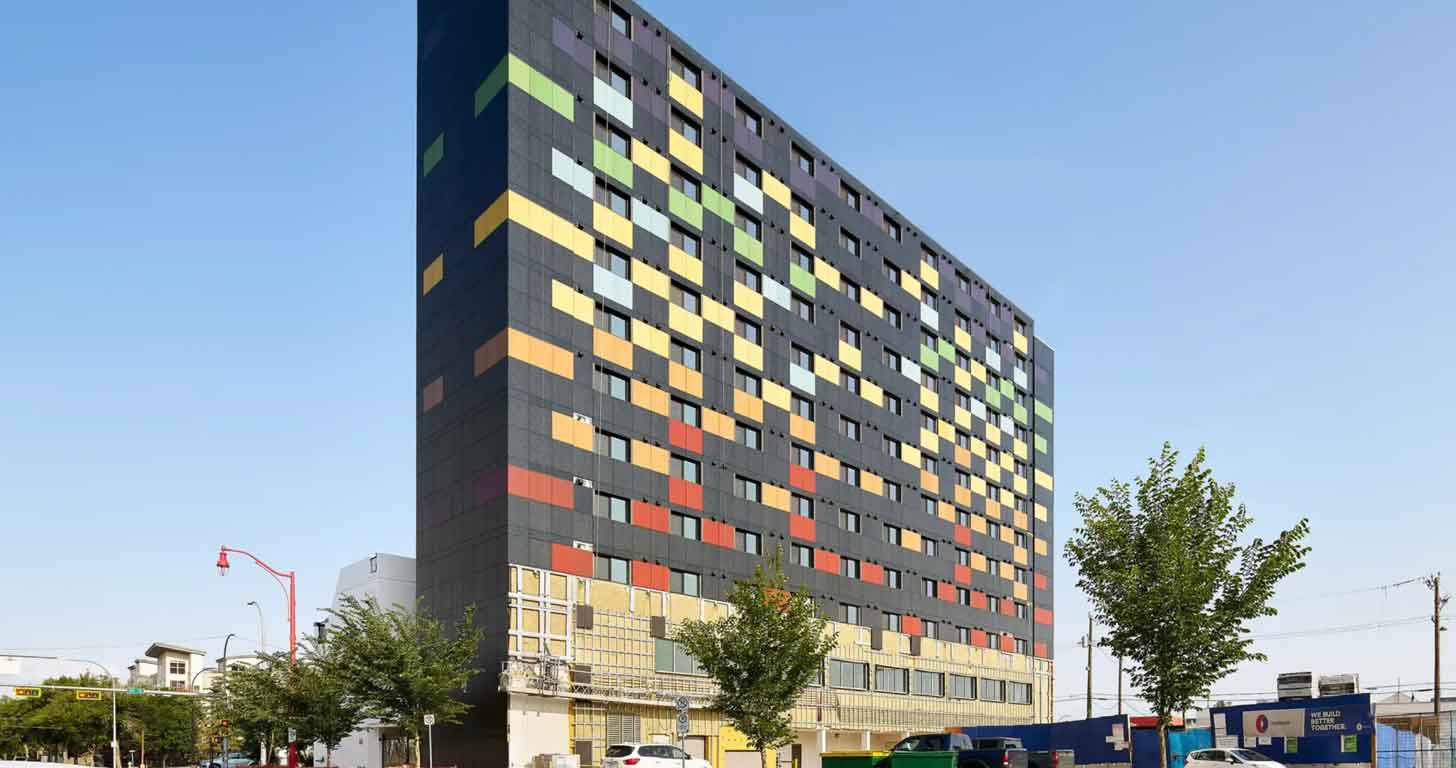What if public art could also power an entire residential building?
The SunRise Building, an apartment complex in Alberta, Canada, has answered that question — and is now the title holder of the Guinness World Record for the largest solar panel mural on Earth.

The installation is a retrofit on an existing building, constructed in the 1970s. With a great location, it required significant renovation to be a viable option on the market. Rather than demolishing it, the building’s owner, Avenue Living, upgraded it entirely.
Now, it’s covered in a colorful mural made of building-integrated photovoltaic panels (BIPV) provided by Mitrex. The panels span 34,500 square feet across the exterior of the structure, a 12-story residential building.
On the northern wall of the building is the main mural, called “The Land We Share,” which stands 85 feet tall, by the Edmonton-based Indigenous artist Lance Cardinal. The photovoltaic panels are strategically placed to depict a tribute to the First Nations and Chinese cultures that are integral to the history of the area.

The rest of the building is covered in accenting colored panels, a mosaic of dark gray, purple, orange, yellow, blue, green, and red panels.
Altogether, it provides 267 kW of solar capacity and powers the building’s common areas, which in turn, will save building owners and residents an estimated $80,000 per year in energy costs, beginning in year five.
This saving is roughly equivalent to the building’s monthly revenue from seven additional residential units. Mitrex also shared that using this BIPV facade instead of replacing the building with cement siding yields a four-year return on investment.

“This landmark project showcases Mitrex’s innovative BIPV solar panels, blending cutting-edge solar technology with vibrant cultural artistry to redefine sustainable architecture,” a press release from Mitrex stated.
“This fusion of BIPV technology and art transforms an aging high-rise into a beacon of sustainability, cultural pride, and urban revitalization.”
At first, the project leaders were planning a 60 kW system for the retrofit, but it wouldn't have been enough to power the entire building or secure funding from Canada’s Deep Retrofit Accelerator Initiative, which requires at least 50% decarbonization from projects of this nature.

So, they incorporated solar cells in Cardinal’s artwork to meet the criteria. The mural features an aluminum honeycomb core and the full system has a rain screen with an air and moisture barrier and continuous insulation to keep it safe from the elements.
Now, the project is able to reduce 150 tons of carbon emissions annually.
“This project is a bold vision for the future of sustainable architecture,” said Danial Hadizadeh, CEO of Mitrex, in a statement. “SunRise proves that BIPV solar solutions can produce clean energy, cut emissions, and inspire communities with culturally resonant designs. We're honored to lead this revolution.”
Echoing Hadizadeh’s words, Mitrex’s press release concludes that the company hopes to drive global adaptation of this technology in similar ways.

Although the SunRise might be the biggest project of its kind right now, hopefully, architects say, it won’t be the last.
“By empowering architects and developers to create self-sustaining buildings, Mitrex is redefining urban landscapes with solar-integrated facades that combine clean energy, bold design, and cultural significance,” the press release states.
“The SunRise project proves that BIPV systems are both functional and inspiring, offering energy savings and aesthetic value for sustainable cities.”
Header image courtesy of Mitrex



